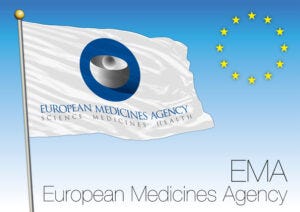October 2, 2023

Oligonucleotide drugs are at the interface of small molecules and biologics, but developers face some unique production challenges, a spokesman for the EU regulator working on new manufacturing guidelines says.
Oligonucleotide R&D activity has increased in recent years, according to Rene Thurmer, a regulator from Germany’s Federal Institute for Drugs and Medical Devices (BfArM), who told delegates about the dynamism in the sector at the TIDES oligonucleotides and peptide therapeutics conference in May this year.
“There has been a lot of success over the last two to three years. And at the moment we have one application under review, and more are coming in the next weeks and months,” Thurmer said.

DepositPhotos/frizio
The surge in activity has given regulators an overview of challenges facing the sector such as drug substance control and manufacturing specifications emerging as a common area of confusion.
The surge in activity has given regulators an overview of challenges facing the sector such as drug substance control and manufacturing specifications emerging as a common area of confusion.
“So we have decided to develop a guideline. Initially, we thought it would be possible to have a combined guideline for peptides and oligonucleotides but, even though there are similarities, there are also fundamental differences.
“And therefore, it has been decided to develop two separate guidelines.”
Scope
The concept paper for the oligonucleotide guidelines was published last September, with the public consultation phase of three months ending in December.
A major finding that emerged from the consultation period is that oligonucleotide developers face unique manufacturing challenges.
A major finding that emerged from the consultation period is that oligonucleotide developers face unique manufacturing challenges.
“It’s stated in our concept paper that synthetic oligonucleotides are at the interface of small molecules and biologicals. And from a quality point of view, specific considerations apply to this class of therapeutics,” Thurmer said.
“The guideline will cover antisense and other single strand products, double strand products as well as siRNA and, as the third, class aptamers.
“The proposed guideline will address the development of an overall integrated control strategy to ensure consistent quality of synthetic oligonucleotides and the resulting medicine,” he said.
Other considerations
The guideline will also address requirements for solid-phase synthesis, including details about batch definition and the description of splitting, pooling, and re-processing steps applied during purification processes.
Starting material and impurity testing requirements will also be detailed in the new document. And these requirements will be included for all the types of products covered by the guideline, according to Thurmer.
“The differences in requirements for single- stranded, double- stranded, and aptamer oligonucleotide products will be clearly outlined. You can imagine that there are different requirements for aptamers than for an antisense oligonucleotide,” he said.
The guideline will also include “recommendations on how to justify the applicability of prior knowledge and pattern technologies” to allow developers to use information from prior oligo-related projects.
Thurmer added that the EMA team also plans to address conjugation – a key area for oligonucleotide manufacturers – with details about PEGylation and combining products with antibodies, peptides and proteins, and so on.
“Additionally, we intend to have some finished product considerations. For example, the choice of excipients formulation and specifically sterilization aspects, which are relevant for formulation containing oligonucleotides,” he said.
No generic purity limits
The authors have not decided whether the guideline will include requirements on purity limits, according to Thurmer.
“Establishing harmonized limits could be considered in this guideline. However, additional discussions are needed as analytical methods and specific oligonucleotide products are not comparable per se,” he said.
Thurmer added that, in response to industry comments submitted during the concept paper consultation period, “we were discouraged from trying to establish generic purity limits.
“These are two dependents on chemistry sequence even within the same chemistry and also the analytical method. So there will be definitively no generic limits in this guideline.”
Generic oligonucleotide products will also be addressed in the new document, Thurmer said, adding that there are likely to be some additional considerations around product quality and comparability assessment.
“Also, there are some ongoing initiatives for the development of personalized antisense oligonucleotides, either for one patient or for our small group of patients, and this should also be considered in our guideline.”
About the Author
You May Also Like




